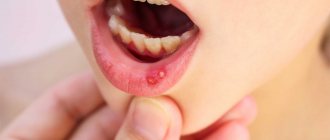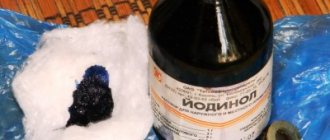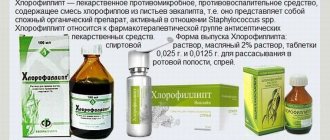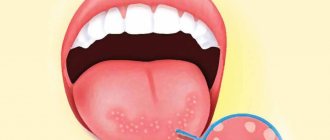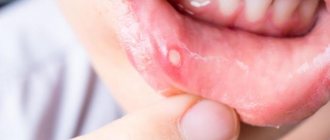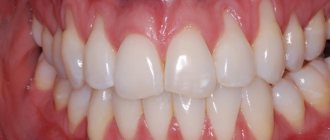What to do if you have inflammation of the cervical lymph nodes
At the first suspicion of inflamed lymph nodes, you can conduct an independent diagnosis at home:
- Examine the neck area where inflammation is found. Perhaps it's just a boil or soft tissue damage.
- If point 1 is confirmed, then this area should be diagnosed in more detail. Gently touch this area with your fingers. If a ball can be felt under the skin, it means that this is clearly an enlarged lymph node.
- Next, we examine the discovered “ball”. If there are a lot of these balls, they are painless when pressed, then this indicates a compromised immune system. You should contact an infectious disease specialist.
- If pain occurs during palpation, as well as lumpiness and immobility of the node under the skin, then a serious diagnosis is needed in the clinic. Diseases of the throat and mouth are characterized by soreness of the lymph glands.
- If you suspect diseases of the ENT organs, you should visually examine your oral cavity for the presence of sore throat, as well as stomatitis, caries. A healthy oral cavity has clean mucous membranes without plaque, teeth are white without black spots. If a visual examination reveals problems, this means that this is the cause of lymphadenitis.
Very often, enlarged lymph nodes occur without obvious symptoms. To do this, you need to see a doctor and carry out a competent diagnosis from a specialist.
Based on the diagnostic results, the therapist refers the patient to the appropriate specialist: ENT specialist, dentist, surgeon, oncologist, hematologist. Inflammation of the lymph glands accompanies about a hundred diseases. With timely treatment of the disease, lymphadenitis also returns to normal.
If the patient has undergone treatment, and the nodes do not decrease within 3-4 months, then a full examination of the body should be done: donate blood for tests, do an ultrasound of the main organs, and consult with specialists.
Aphthous stomatitis
Gastrointestinal diseases, allergies, rheumatism, viral infections and hereditary predisposition lead to aphthous stomatitis. The disease occurs in a fairly severe form.
So-called aphthae appear on the oral mucosa - whitish ulcers with a diameter of 3-5 mm with a narrow red border. There is a deterioration in health, an increase in temperature, and pain in the area of the ulcers.
Aphthous stomatitis occurs in both acute and chronic forms.
We invite you to familiarize yourself with 7 ways to look younger with the help of a dentist
Aphthous stomatitis - causes of development
There is still debate about the causes of the disease. Doctors agree that the following can lead to pathology:
- autoimmune disorders;
- spread of painful microflora.
The process of development of stomatitis looks something like this: pathogenic microorganisms enter the mouth and contribute to changes in the composition of saliva. Immune cells initially do not recognize the pathogen, so no symptoms occur. A little later, the production of lysocytes begins - compounds that destroy pathogenic microflora. As a result, the affected areas turn into ulcers.
Among the factors that increase the risk of developing aphthous stomatitis:
- failure to comply with hygiene rules;
- unbalanced diet;
- being in a state of severe stress;
- use of low-quality dental products with aggressive chemical composition;
- smoking;
- the habit of gnawing foreign objects, biting the lip or the inner surface of the cheek;
- vitamin D deficiency;
- diseases of the gastrointestinal tract;
- long-term antibiotic therapy;
- uncontrolled use of strong NSAIDs.
Before deciding how and with what to treat aphthous stomatitis, you need to eliminate all provoking factors. Otherwise, a relapse will not be long in coming.
Herpetic (cold sore) stomatitis
It occurs in both children and adults. It is caused by the herpes simplex virus. The disease can be acute or chronic.
In a mild form of the disease, small blisters resembling aphthae appear on the mucous membrane.
In severe form, the rashes are multiple. The mucous membrane becomes inflamed and swells. Salivation increases. Characteristic symptoms include general malaise, toxicosis, fever, and enlarged lymph nodes. When eating, burning and pain are felt.
Classification
Aphthous stomatitis is not only acute and chronic. Dentists also call its other forms:
- Necrotic. Caused by the negative influence of viruses and infectious agents. Causes the death of affected mucosal cells. Each new exacerbation leads to the appearance of aphthae of a larger diameter. It is difficult for the patient to eat. Pain occurs even when talking. Wound healing takes a whole month.
- Fibrinous. The ulcers are gray in color. They go away on their own within seven to fourteen days. They may recur every three to four months.
- Scarring. The size of the aft is about one centimeter. When they heal, scars form. The time required for ulcers to heal is about three months.
- Glandular. It harms the salivary glands and disrupts their normal activity. The wounds in the mouth are large, take a long time to heal, and then appear again.
- Herpetic. It is usually found in children who become infected with the herpes virus during birth or in utero. Aphthae look like fluid-filled herpetic blisters. There are always a lot of them - up to thirty of them can appear at the same time. The mucous membranes of a newborn are bright red.
- Deformable. It is one of the most severe forms of aphthous stomatitis. Aphthae affect the deep layers of mucous membranes, which is why the regeneration process is delayed. After healing, scars appear, changing the structure of the oral cavity.
- Recurrent. Occurs more often in adults than in children. The wounds merge with each other, forming extensive ulcerative surfaces. They are covered with a white coating. They hurt very badly and bleed periodically. Also, patients with this form of the disease often complain of a burning sensation in the mouth.
- Mixed. Widely distributed among children over four years of age. Erosions hurt and itch. They either disappear or appear again. But each new case is more severe than the previous one, so in no case should you postpone treatment until later.
Home treatment for stomatitis
Home treatment of stomatitis using folk methods is aimed at solving two problems:
- For antiseptic and anti-inflammatory rinses.
- For these purposes, you can use herbal decoctions of calendula, chamomile, plantain and antiseptic ointments based on propolis, sea buckthorn and vitamin A.
- To stimulate the immune system by drinking solutions of rose hips, sea buckthorn, taking amaranth oils and other means.
- However, before home treatment, you need to consult a dentist, because very often it is necessary to eliminate not only local, but also general causes of stomatitis, such as Candida fungus or the herpes virus, not to mention more serious diseases.
How and what can be used to treat aphthous stomatitis in adults
Aphthous stomatitis is one of the variations of inflammation of the oral mucosa, which occurs with the formation of painful erosions (aphthae). In this case, the sick person experiences a feeling of severe discomfort. Treatment of the pathology is prescribed based on the reasons that provoked its development.
The main factor in the formation of aphthous stomatitis can be called various infections, as well as previous viral diseases. For example, this could be influenza, measles, herpes virus activity, staphylococci, etc. The disease must be treated under the supervision of a medical specialist.
How to treat stomatitis?
It makes sense to start the treatment process of any form of stomatitis with professional hygienic cleaning, removal of tartar and plaque. It is also necessary to cure caries, if present.
Next, the mucous membrane is treated with antiseptics. Throughout the day, you can rinse your mouth with warm solutions of calendula and chamomile. Thanks to such measures, catarrhal stomatitis can go away after 5-10 days. If it turns into aphthous or ulcerative, general treatment will have to be added to the local treatment. Contact the clinic for additional antiseptic procedures.
In the case of herpes stomatitis, antiviral therapy is indicated. Candidal stomatitis is treated with antifungal drugs.
If stomatitis is caused by any other disease (for example, gastrointestinal disorders), during treatment it is strictly recommended to follow a diet limiting coarse, sour, hot, cold and spicy foods.
Prevention measures
To avoid the disease, dentists recommend:
- Healthy food;
- give up bad habits - smoking, drinking alcoholic beverages, using drugs (nasvay);
- wash your hands before eating;
- brush your teeth thoroughly twice a day;
- Have annual checkups at your dentist's office;
- promptly treat caries and gum disease;
- avoid injury to mucous membranes.
If stomatitis does appear, you need to pay sufficient attention to its treatment. It is better to undergo a long therapeutic course to the very end once than to suffer several times due to painful ulcers.
How does aphthous stomatitis go?
Doctors distinguish only 4 stages:
- Initial. During this period, body temperature increases and general malaise is observed. If you palpate the cervical lymph nodes, they are enlarged and painful to the touch. Lost appetite.
- Active. Redness appears on the surface of the mucous membrane. A little later, erosions form in their place.
- At the next stage, erosive formations transform into painful ulcers.
- The final stage. At this stage, healing of aphthae occurs, and discomfort, itching and burning in the oral cavity disappear.
We suggest that you familiarize yourself with Treatment of stomatitis in children - symptoms in the mouth, photos of infants
With a decrease in immune defense and the presence of numerous chronic diseases (which is typical for all adults), aphthous stomatitis almost always passes into the stage of a chronic recurrent type.
Causes of pericoronitis
As the tooth erupts, it rests on the mucous membrane. He does not always immediately overcome this barrier. A tooth can remain under the gum from 4 weeks to 6 months or more, gradually lifting and injuring the gum. This leads to the fact that the gums cease to protect the tissues from pathogenic bacteria and small food particles; they easily penetrate under it and provoke an inflammatory reaction.
The inability to perform hygiene under the hood is the main mechanism of pericoronitis. But other factors can increase the risk of inflammation or worsen the situation:
- anatomical features of the structure of bone tissue and gums - thickened periosteum or gums, lack of space in the jaw;
- violations of the rules of oral hygiene - in this case, it is easier for bacteria to begin to actively multiply;
- trauma - damage to periodontal tissues by solid food particles, excessive brushing with bristles during cleaning;
- chronic diseases of the oral cavity - erosions and ulcers, stomatitis, gingivitis, caries, pulpitis, periodontitis, including near the erupting tooth;
- dystopic or impacted tooth, eruption at an angle, impossibility of complete eruption.
More often, pericoronitis is observed in the area of erupting eights or wisdom teeth. This is due to the fact that they appear in adulthood, when the dentition is formed and the jaw has stopped growing. At the end of the dentition there is simply no room left for a large tooth, and therefore the figure eight grows at an angle or is partially hidden by the gum. If wisdom teeth begin to erupt before the age of 20, the process is usually easy. At older ages, the process is more often complicated by pericoronitis.
Ask a Question
Candidal stomatitis
This is a fungal disease typical of older people and children. As a rule, such stomatitis progresses against the background of decreased immunity, as well as with long-term treatment with powerful antibiotics.
Candidal stomatitis is characterized by the following symptoms: burning sensation in the mouth and larynx; white coating in the mouth and tongue; hyperemia and bleeding of the mucous membrane; an unpleasant taste in the mouth or a complete loss of taste.
The type of stomatitis described is considered contagious and can be transmitted both through household and sexual contact.
Description of the disease
The name of the disease “aphthous stomatitis” comes from the term “aft”, which translated means “ulcer”. This is due to the fact that the main symptom of the pathology is the formation of ulcers of different shapes and sizes in the patient’s oral cavity. They are located isolated or form small groups.
Typically, ulcers in adults are located in the front of the mouth on the inner surface of the lips or cheeks. Less often they are found on the tongue. Aphthae are very painful and cause severe discomfort when eating. On average, they remain in the mouth for about ten days.
Visually, they appear as circles filled with a white or grayish coating. Their border is bright red. In diameter - up to one centimeter. If a person’s immune system works normally and treatment was started on time, no more than one or two ulcers will form. In severe cases of the disease, the number of abnormal areas exceeds three.
Treatment of inflammation of the lymph nodes with antibiotics
Antibiotics for inflammation of the lymph nodes in the neck are used only as prescribed by a doctor. These drugs make sense if the infection is caused by bacteria. In addition, it is necessary to be very careful with this method of treatment, since antibiotics have negative side effects on the body.
When prescribing antibiotics, doctors give preference to drugs with a broad spectrum of action. The most common antibiotics are the penicillin group. In case of individual intolerance to penicillin, antibiotics of the following groups are prescribed:
- macrolides;
- sulfonamides;
- quinolones;
- cephalosporins.
For inflamed lymph nodes that accompany diseases of the ENT organs, the following drugs are most often prescribed:
- Amoxiclav;
- Azithromycin;
- Amoxicillin;
- Tsiprolet;
- Cipronol;
- Ceftriaxone;
- Biseptol.
These medications should be taken according to the regimen prescribed by your doctor. The doctor competently determines the dosage in accordance with the patient’s age and body weight, taking into account the individual characteristics of the body. It is strictly forbidden to take antibiotics on your own!
Main symptoms
How the disease manifests itself depends on its form and degree of neglect, and the individual characteristics of the human body. In most cases, the inflammatory process proceeds as follows:
- lymph nodes become enlarged, inflamed, and begin to hurt;
- body temperature rises slightly;
- a red spot with a diameter of up to five millimeters, covered with a gray, white or yellowish coating, appears on a separate area of the mucous membrane.
The ulcer hurts a lot. It may increase in size. Also, over time, new inflamed foci appear in other areas of the mucosa.
Treatment of stomatitis
Many patients are interested in how to quickly cure stomatitis? Which doctor treats stomatitis in adults and children?
Most often, local treatment of all types of stomatitis is carried out by a general dentist or periodontist. Treatment of stomatitis in adults and children is carried out mainly symptomatically, but with mandatory consideration of the main cause of its occurrence. Medicines for stomatitis in adults are aimed at relieving swelling, pain and inflammation.
Local treatment of stomatitis begins with the removal of dental plaque, antiseptic and anti-inflammatory rinses of the mucous membranes, as well as anesthetic ointments and gels for the treatment of aphthae and ulcers are prescribed. Limit food, exclude hot, spicy and hard foods. If candidiasis is detected, then antifungal drugs are prescribed; if there is herpes, then antiviral drugs are prescribed.
The main common root cause of stomatitis, gastrointestinal diseases, immune diseases, etc. are always identified and treated. It is clear that this is not done by dentists, but by their colleagues - specialized doctors. However, the first person who can detect and pay attention to this and send the patient for examination to colleagues is the dentist.
We invite you to familiarize yourself with Stomatitis: types, treatment, expert advice
The most pressing question from many patients is: “How much does it cost to cure stomatitis? Where can stomatitis be treated inexpensively and efficiently?”
The price for turnkey treatment of stomatitis in dentistry in Livny and other large cities of Russia is determined by the causes of stomatitis. The cost of local treatment of oral stomatitis on a turnkey basis starts from 2000 rubles and can reach 20 thousand rubles or more. Prices for general treatment of stomatitis depend on the main pathogenic factor and concomitant diseases, such as systemic herpes, the presence of Crohn's disease, enteritis and other health problems.
Surgical methods of treatment
Treatment of pericoronitis is almost always surgical. And if we talk about molars and premolars, dentists choose the tactic of excision of the gingival hood. But treatment in the area of eights is almost always performed by removing wisdom teeth, and further we will explain why.
Excision of the gingival hood opens access to the growing tooth; this measure allows not only to remove excess inflamed tissue and thoroughly rinse the area, but also to help the tooth erupt completely and take its correct place in the dentition. This method has several conditions or indications:
- integrity of the crown and root system of the erupting tooth;
- correct location of the tooth in the bone tissue of the jaw;
- availability of sufficient space for complete tooth eruption in the row.
That is, this approach is used in all cases where the gums are the only obstacle to normal tooth eruption. If a unit of the dentition is not very healthy, for example, caries is observed, the integrity of the crown is compromised, or there are diseases of the root system, then the decision is made individually. If it is advisable to preserve the tooth, the doctor will also perform an intervention and take measures to eliminate the pathology.
Impacted and dystopic teeth, as well as situations in which complete tooth eruption will inevitably lead to malocclusion or displacement of adjacent teeth are indications for a different type of surgical treatment. The doctor may suggest tooth extraction, and in cases of disease above the “eight” level, this is almost always the only option to solve the problem.
The fact is that wisdom teeth do not bear a functional load, very often erupt at an angle, interfere with neighboring teeth and increase the risk of complications, including bite defects. Therefore, it is considered appropriate to remove the “eight” and further measures to eliminate inflammation in the soft tissues.
The only exceptions are cases when the “eight” could potentially be used as a support for a prosthesis or be important in planned orthodontic treatment.
In general, the following cases and features are indications for removal of both the hood and the tooth:
- excision of the hood has already been performed previously, but the inflammation has not gone away and/or has intensified, there is no effect from the treatment;
- the tooth does not have enough space in the dentition;
- impacted, dystopic tooth, the preservation of which jeopardizes the health of neighboring teeth and the oral cavity;
- the gingival hood grows over the erupting tooth again (this rarely happens);
- the tooth is affected by caries/destroyed, its treatment and preservation are impractical.
Since it requires the removal of a tooth that has not yet fully erupted, the procedure is considered a complex extraction. Most often, it requires preliminary dissection of the gums and extraction of the tooth from deep-lying tissues. Therefore, in many cases, sutures will be required on the gums, which will speed up tissue healing.
Surgical treatment of pericoronitis is performed under local anesthesia, so the procedure will not cause discomfort. An obligatory step is washing the mucous membrane with antiseptic solutions.
Removal of tissue hanging over the tooth can be done with conventional instruments or a laser.
Treatment of stomatitis at home
To treat stomatitis at home, first of all, certain infusions and decoctions are used that have anti-inflammatory, immunostimulating and antiseptic effects. The most accessible options are calendula and chamomile.
Only rinsing the mouth with decoctions is effective, but also taking them orally. Rose hips are suitable for this. It contains a large amount of vitamins, strengthens the immune system, and helps in destroying harmful microorganisms. However, we should not forget that herpetic and candidal stomatitis cannot be cured with folk remedies, because these diseases are based on fungi that are not affected by the compounds described above.
Stomatitis and lymph nodes
Hello, the child is 1.6 months old, on Friday (June 14) at night the temperature rose to 38.5, Saturday and Sunday it stayed, there was only a runny nose and profuse salivation, they thought that fangs were coming out, on Monday they called a doctor, she said that it was stomatitis, she discovered one lump on the lip and one on the tongue, the gums are red, she also said that the red throat looks like a sore throat is attached, the submandibular lymph nodes have increased.
Prescribed: ecoclave 3 times a day Suprastin 1/4 tablet 2 times a day Panavir in the throat and on affected areas 3 times a day Interferon 5 drops 5 times a day Linex 1 capsule 3 times a day Genferon 1 suppository 2 times a day
Today the temperature has been rising for 5 days, but it doesn’t go down for long, all the symptoms persist, I started coughing.
Ulcerative stomatitis
This is a more severe form of the disease than the previous one and can develop from its advanced stage.
Often the disease progresses in those who suffer from stomach ulcers or chronic enteritis. We include in the risk category those with diseases of the cardiovascular system and blood. Poisoning and infectious diseases increase the risk of developing ulcerative stomatitis.
Symptoms: the entire thickness of the mucous membrane is affected, the temperature can rise to 37.5, all this is accompanied by headache, weakness, and inflammation of the lymph nodes. Eating is uncomfortable due to pain.
